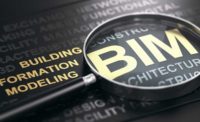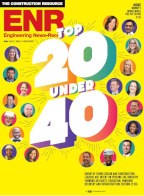Commentary: Five Reasons Why Leaders Are Not Talking About Our Crumbling Infrastructure
Throughout the recent presidential campaign, several topics were discussed ad nauseam. In debates, interviews, campaign ads and stump speeches, the economy, taxes, job creation, national security and the national deficit got a lot of attention. But it has become clear that unless we have a catastrophic failure of another piece of infrastructure, there is little likelihood that our imperiled roads and bridges will receive the attention they deserve. And without a political push, federal funding will not be provided to correct decades of neglect.
The U.S. has 4,000 dams in danger of bursting and flooding cities and towns. Our clean water pipes leak an estimated 10-billion gal. of water a day. Congested roads cause more than $87 billion in wasted gas and loss to our economy. There are 7,980 bridges we rely on to keep commerce going that are in danger of collapsing, just as the I-35W Bridge in Minneapolis did in August 2007. These certainly sound like economic and national security problems to me, and finding ways to fix them would put people back to work.
Those in power must remember that the risks we face are not limited to dangers to the traveling public. They include jeopardizing our country’s entire commercial sector as well as our national security network. Here are five reasons that this essential issue continues to be ignored by the nation’s leaders and policymakers.
1. No political will. There is no Occupy Wall Street movement calling attention to the fact that politicians are blithely ignoring this national tragedy-in-waiting. One reason the infrastructure issue doesn’t get much traction is that it’s overwhelming for citizens and policymakers. Many politicians simply don’t know where to start. They look at what has happened to leaders who have taken a leap of faith on solving big problems—for example, President Obama and his actions to reform health care—and see the political backlash that comes with those actions.
Currently, few political leaders have spoken up. That’s probably because little money is available to start on the first repair. But to be blunt, no money is likely to become available in an atmosphere that has politicians signing vows not to raise taxes and ignoring proposals to provide stimulus money to restore jobs to the two million construction workers who could attend to these ailing facilities. We need leaders brave enough to take the all-important first step.
2. Politicians go where the money is. Our politicians have, in the words of Thomas L. Friedman of The New York Times, become “inhibitors, not enablers.” They are ensconced in a system that makes them totally beholden to the lobbyists they must have in order to fund their re-election campaigns.
It’s simply not true that there is no money for infrastructure investment. The truth is, states aren’t required to spend the federal funds they’re given on bridge repairs. They can, and do, allocate half of that money to other projects. Over the years, politicians have used those funds to build new projects that lead to ribbon-cutting ceremonies, publicity and votes. Repairing infrastructure just isn’t sexy enough. Repair projects don’t get the attention of big donors, so politicians spend money on projects that will.
3. Partisan bickering. Our politicians brook no interference by the rest of the nation when it comes to what they do in Washington and how they frame the national agenda.
Throughout the election, we were held in a political chokehold of two philosophies sure to guarantee gridlock for years to come, with no give and take by either side. The GOP adamantly resists any attempt to increase taxes, even on those who make over $1 million a year and who pay the lowest tax rates in decades. The Democrats have totally failed to make a persuasive argument that cutting social benefits, raising taxes on the rich and paying for needed stimulus for high-speed rail networks and other infrastructure improvements will not lead our economy into further ruin.
4. Job creation is a political buzzword, not action. Not just the presidential candidates but many candidates in Congressional races and state and local races uttered those words every chance they got. No matter what side of the aisle a candidate is from, he or she won’t hesitate to tell you how they’re all about job creation. But by ignoring our nation’s infrastructure, they’re all leaving on the table an amazing opportunity to put people back to work.
Consider this: Studies show that every $1 billion of infrastructure investment creates 10,000 to 31,000 jobs. Therefore, if we estimate that the top 2,000 of our deteriorating bridges can be fixed for an average of $20 million, then with an investment of $40 billion, we can create as many as 400,000 jobs that will last for at least two years and avoid future catastrophes. One-third of this expenditure (i.e., $13 billion) will immediately be returned to the federal and state governments via income taxes. The balance will be rotated through the economy as workers spend on food, housing, clothing and other consumer goods. The net cost to the deficit would be zero.
5. Alternative funding methods are repeatedly ignored or avoided. To date, many public-private partnerships in the U.S. have been quickly quashed by a combination of lobby interests and government concern that the deals will unfairly favor the private sector.
For example, in 2008, the Pennsylvania legislature derailed efforts by a consortium of private investors to pay the state $12.8 billion for a 75-year lease to manage the Pennsylvania Turnpike. A report by the Pew Center about that failed transaction found that causes ranged from a lack of coordination between the executive and legislative branches of state government, overly optimistic financial assumptions and the lack of a “clearly articulated plan for how the proceeds would have been invested and spent.”
We must take the right precautions in pursuing public-private partnerships. But they are options that should be on the table. By taking the right steps, we can devise several workable models to use P3s to improve the nation’s infrastructure while still protecting the traveling public from excessive toll rates and ensuring that the interests of truckers, railroads, union workers and the towns and cities along those routes are fairly heard and balanced into the equation.
Barry B. LePatner is founder of the New York City-based law firm LePatner & Associates LLP. He has written several books, including “Broken Buildings, Busted Budgets: How to Fix America’s Trillion-Dollar Construction Industry.”


